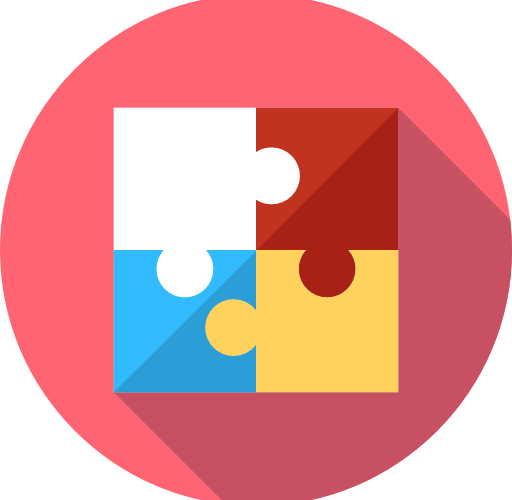Week 3 was focused on “people-writing” or “ethno-graphy” within the context of human centered design (HCD). Ethnography is a qualitative research method that is used in social sciences to collect empirical data on peoples, cultures and societies. The purpose of ethnography in HCD is not to find out how people respond to prefabricated situations by studying narrowly defined variables, but to learn how people work and play within specific domains. For example, ethnographic design can be used to study a group of pilots and how they work in the cockpit, or a group of technicians and how they work in the aircraft maintenance facility.
Ethnographic design is premised on naturalistic observation of, and interaction with people in their environment. When designing human centered technology, the designer needs “to become” one of the participants under study. This level of involvement helps the designer to see the world through the eyes of the participants and facilitates acceptance among them. However, this intimate involvement may lead to the introduction of a “researcher bias”. To this end, ethnographic design may become relatively subjective in order to gather reliable data.
The primary purpose of fostering a relationship with the participants is to strengthen the elicitation of knowledge that can lead to a deep understanding of the motives and culture of the participants. Such elicitation exploits human nature, and leverages tendencies of humans to be honest, polite, helpful and expressive of their expertise. Therefore, effective ethnographic designers master natural conversation and interaction styles.
After laying a foundation with the basics of ethnographic design, the focus of the lecture shifted to understanding the psychology of idea generation and the dichotomous relationship between the left and right hemispheres of the brain. The right hemisphere is responsible for artistic, abstract, irrational, intuitive and subjective emotions needed to create holistic viewpoints. Whereas, the left hemisphere is responsible for logical, rational, objective and scientific reasoning that is based on facts and detail-oriented arguments.
Both hemispheres work together to facilitate divergent thinking and convergent thinking. The right hemisphere is mainly accountable for divergent thinking, which involves the brainstorming process and generation of ideas. On the other hand, the left hemisphere is mainly accountable for convergent thinking, which involves analysis and synthesis through evaluation and prioritization. In problem solving both hemispheres are involved.
As simplistic as this model may sound, there are issues that arise when multiple brains work in tandem (or people work in a group, team or organization). For instance, when problem solving among a group of experts, there can be closed minded persons – bolts need to be unlocked; some persons may tend to focus on irrelevant matters thereby failing to attend that which is important – tuning needs to eliminate interference; time management becomes a challenge – please follow the meeting timeline; and, the members as well as the group needs to build credibility incrementally – reputation is not built overnight. However, with carefully devised methods such as brainwriting (brainstorming in writing), the strengths of multiple brains can become powerful forces in the creative design thinking process.
Creativity is about risk taking and managing uncertainty. There are four (4) kinds of creativity: (1) innovation, which is an umbrella term that encapsulates most of creativity, but primarily refers to truly original thinking; (2) synthesis, which involves combining information, artifacts or people from different sources into a new pattern; (3) extension, which involves extrapolating an idea beyond current constraints and limitations; and (4) duplication, which is about improving or reusing an idea often in a new area or domain.
Risk taking is imperative to overcome uncertainty, and natural for learning to occur, especially in autodidacticism. It was suggested by Dr. Boy that when facing a risk the best thing is to be prepared. Risk taking should be progressive and incremental. The critical time in performing any activity is when the activity becomes routine. It is when the operator becomes acquainted that complacency creeps in, and an important situation catches the operator “out of the loop”.
When seeking creativity, intuition is also needed i.e. that right hemisphere activity that the philosopher Hubert Dreyfus describes as “the process that enables someone to do the appropriate thing without rationalization”. Dr. Boy cemented this concept with a story about a professional skier who uses his intuition to determine when he will take on a given slope. “When I don’t feel it, I don’t do it,” he said. Intuition involves risk taking.
Another ingredient of creativity is expressivity. Dr. Boy used a biological construct to suggest that expressivity relates to variations of a phenotype (observable trait) in entities carrying a particular genotypes (what things are made from). In the context of creativity in HCD, I gathered that the act of creative expressivity occurs when ideas or viewpoints to solve a design question are articulated from different perspectives among individuals from the same domain. For example, the range of design suggestions for improving a cabin design that can be elicited from a group of business executives. Expressivity involves risk taking.
When it comes to the activation of creativity, the method of least commitment can be applied. Dr. Boy presented two heuristics, i.e. breadth-first vs depth-first, and gave explanations of both. The analogy of searching through a knowledge tree or an nth dimensional neuronal network shows how the least commitment path may be significantly dependent on the domain. These contrasting approaches require the designer to tune tradeoffs and balances (e.g. boldness vs prudence) during the creative process. The designer should go as far as necessary into the design possibilities but retain the “meaningful” root purpose of the design question. Dr. Boy reiterated that committing too early is likely to result in patching; however, committing too late may result in too much cost and resources. Commitment involves risk taking.
In my extra reading, I came across a summary of a presentation entitled Commitment and Creativity that was conducted by Seana Moran at the August 2008: American Psychological Association. I found it very inspiring as a creative person.
Commitment involves how a person invests resources in a work role over time. Creativity is a novel, appropriate variation embraced by a field of gatekeepers that transforms the domain. What role does commitment play in the careers of 36 writers with different levels of creative influence? For the least creative, commitment compensates. They invest in the craft of writing to improve their social standing within the field. For experimentalists, commitment defies. They twist traditions to yield new meanings, which gains them increased control over their self-expression. For the most creative domain transformers, commitment impassions. They trust some beloved aspect of literature, such as a character or poetic form, to convert new minds to the wonders of the domain. (Moran 2008)
To round off the final stanza on creativity, Dr. Boy defined cultural blocks as prominent inhibitors to creativity i.e. the cholesterols of creative juices. For example, among scientists and engineers, the constant search for objectivity may block subjective and divergent thinking. Additionally, not everyone likes to take risks i.e. some persons are risk averse. The designer should remain goal driven (intentional) versus become event driven (reactive) because there is a “meaningful” root purpose of the design question.
The flow of the class evolved into the multi-phased construction of the Group Elicitation Method (GEM), which is a well-trained brainchild of Dr. Boy. “GEM is a brainwriting technique that can be computer-supported and enables contradictory elicitation of viewpoints from various (field) domain experts, augmented with a classification method that enables categorization of these viewpoints into structured concepts” (Boy 2013).
The first, and maybe most important step, is articulating the initial question. This is why I have repeated the need for the designer to establish a meaningful root purpose for the question itself i.e. start with the end goal in mind. The key challenge in this first step to overcome is proper statement construction.
The second step involves the choice of the participants. Unlike experiments that are conducted for statistical significant results, the number of participants does not have to pass a power analysis test. A wide range of GEM sessions have generated reliable results with 6 to 10 domain experts who share a common language (e.g. users, managers, and designers). 7 is the magic number! Dr. Boy reminded the class that the facilitator and his/her assistant should conduct a dry run with one or two experts prior to the actual GEM session.
The “divergent thinking” and brainwriting process requires each participant to empathetically state his/her viewpoints in clear, simple language within a given time period then circuitously make one of three actions on all of the stated viewpoints (agreement; disagreement; or new viewpoint/idea). The brainwriting process is a circular, interactive and time-based process. Numbers may be assigned to participants in order to keep their viewpoints anonymous; thereby leveling the playing field and drowning social dominance in the process.
The next steps focus on “convergent thinking” and concept categorization. A framework like AUTOS pyramid can be used to bring structure to concepts. In concept categorization, the viewpoints are treated as elements and they are organized into sets, which are concepts. There are four main processes that each element may go through in order to be categorized into a set i.e. (1) create a new set; (2) belong to a set; (3) merge multiple sets; or (4) split a set. The resulting list of sets or concepts facilitates the rationalization of the design criteria.
Using the GEM as a design method, it can be viewed as collaborative writing i.e. a process where the ontology of the domain is incrementally defined through expressed concepts and their relationships. Consensus is the summative process which consolidates the expressed design criteria. Dr. Boy proposed two ways of reaching consensus. The first option involves each participant providing a subjective priority rating on each concept, and deriving a ranked consensus along with the sums, means and standard deviations (SD) of all participants. This option is computationally simple and generally preferred. The second option involves each participant using a +1, 0 or -1 (more important, equally important or less important) to denote the relative priority for pairs of concepts, which are arranged in a triangular matrix. Again the sums, mean priorities and SDs across the concepts can be generated along with a ranked consensus. However, the results from the computed matrix can be plotted on a consensus graph, which provides information on the strength of the relations between the concepts i.e. the number of connections terminating at a concept indicates a strong consensus; whereas a concept with fewer connections depicts a weak consensus. Top concepts and lower concepts can be derived from the ranked consensus. It is noted that intermediate concepts tend to generate the most discussion among the participants. Immature concepts, which may be poorly expressed, have small SDs as opposed to contradictory concepts, which exhibit large SDs.
Among his many instantiations of the GEM, Dr. Boy commented on the impressive results generated at Air France, and later at Embraer. The GEM has been proven to facilitate parallel group interaction that enables the participatory design of knowledge. The output of the GEM is a database of ideas and viewpoints. The role and responsibilities of the facilitator were emphasized. The facilitator needs to take risks, make suggestions, and motivate the participants. The facilitator is responsible for preparing the GEM, making sure the meeting facilities are in place, conducting the meeting and capturing the process. It was noted that as a decision support tool, GEM can be used for design as well as for evaluation.
With ethnographic design under my belt, I was motivated to understand how this method could be applied in the consideration of the Internet and mobile phone technology layers. At the end of Week 3, there were several key take-aways which I’ve summarized below in an abstract for my research project to answer the design question: How can the group elicitation method be augmented using a web application?
In ethnographic design with groups of domain experts, the Group Elicitation Method (GEM) is used to facilitate dynamic interaction and participation around a specific design question with the aim of generating creative innovations. This research project outlines an augmented version of the GEM, which is purposefully designed to boost effectiveness and efficiency of the traditional method while enhancing the experiences of the facilitator and participants. The augmented GEM leverages the Internet and digital media to reduce implementation costs, increase reusability of assets, enable remote participation, and archive results from multiple GEM sessions for comparison. The web application, which encapsulates the augmented GEM procedure, utilizes instructional videos to guide the process as well as gamification concepts such as avatars, progress bars, stages and points to motivate participants. Features of the augmented GEM include: (1) micro-tweeting – creating viewpoints with concise, empathetic statements; (2) collaborative brainwriting – elicitation and refinement of viewpoints from multiple perspectives; and, (3) auto-scribing – self documentation of questions and comments during concept categorization for the question-and-answer session. At the end, a subjective ratings tool and objective metrics are used to comparatively test the augmented GEM against the traditional GEM. The results of the comparative analysis are discussed to inform recommendations. (Weekes 2017)
I also read Chapter 7 of Orchestrating Human Centered Design, which is titled Modeling and Simulation (Boy 2013). Therein, I found a summary of the GEM. Additionally, I read Dr. Boy’s articles entitled “The Group Elicitation Method: An Introduction” (Boy 1996) and “The Group Elicitation Method for Participatory Design and Usability Testing” (Boy 1997). Hurricane Irma is history; now Week 4.
References
Boy, G.A. (1997). The group elicitation method for participatory design and usability testing. Interactions, March-April, ACM, New York, pp. 27-33.
Boy, G.A. (2013). Orchestrating Human-Centered Design. Springer, U.K. ISBN 978-1-4471-4338-3, pp. 139-168.
Moran, S. (2008). Commitment and Creativity. American Psychological Association.



